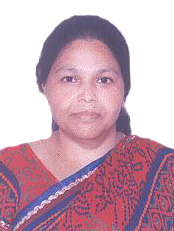DIVISION OF PLANT EXPLORATION & GERMPLASM COLLECTION

Head of Division: Dr. Praveen Kumar Singh
Contact Numbers: 011-25802885 Ext. 885,863
Address: ICAR-National Bureau of Plant Genetic Resources, Pusa Campus, New Delhi – 110012, INDIA
E-mail: praveen.singh1-icar@nic.in
Google Map
Mandate
Exploration for collection of germplasm of agri-horticultural crops, maintenance of herbarium, Bio-systematic studies, gap analysis of agri-horticultural crops and ethnobotanical studies
Salient Achievements
- Since inception (up to 31st December, 2023), a total of 2,84,337 accessions comprising of cultivated (2,13,242) and wild species (39,850) through 2,879 explorations have been assembled in coordination/collaboration with NBPGR Regional Stations/Base centres, ICAR crop-based institutes, State Agricultural Universities (SAUs), Krishi-Vigyan Kendra and various other organizations. Besides, explorations were also undertaken outside India (Table 1).
- Crop-group wise accessions included cereals (61,747), pseudocereals (7,536), millets and minor millets (23,129), vegetables (56,413), pulses (42,485), oilseeds (25,846), fruit crops (15,084), fibres and allied crops (5,786), fodder and grasses (2,051), medicinal and aromatic plants (M&AP)/spices and condiments (28,673), sugar yielding species (1,239), agro forest/tree species (21,10) and other economic species (12,228).
- National Herbarium of Cultivated Plants (NHCP) holds 25,820 herbarium specimens (representative of 4,415 species belonging to 1,552 genera and 267 families), 3,202 seed samples and 787 economic products.
- Use of GIS in gap analysis: Geo-referencing and mapping of diversity vis-à-vis germplasm collected and conserved has been completed in 1,60,733 accessions of 24 major crops (rice, wheat, maize, chickpea, pigeon pea, Sesamum, pearl millet, sorghum, fox-tail millet, finger millet, proso-millet, little millet, kodo millet, black gram, moth bean, green gram, cowpea, rice bean, brinjal, Allium spp., chickpea, kidney bean lentil and mango) and accordingly gap areas were identified up to district/taluk level. This activity also facilitates the identification of duplicates and updating of passport data. Trait-specific germplasm and potential sites are being identified through grid mapping.
| Year | Crop(s) | Accessions collected | Collaborating Institute/ Region/ Country |
| 1977-78 | Winged bean, velvet bean, green gram | 84 | India & Indonesia (Java) |
| 1977-78 | Almond, walnut, filbert, cucurbits, Capsicum, tomato | 152 | India-USSR (Central Asian Republics) |
| 1979-80 | Deep water rice and legumes | 330 | NBPGR/ WARDA, India – Mali & Nigeria |
| 1979-80 | Rice, grain legumes, millets, vegetables | 2900 | FAO/NBPGR, Nigeria & West Africa |
| 1980 | Rice, maize, pearl millet, sorghum, vegetables & tuber crops | 1799 | FAO/NBPGR, Malawi & Zambia |
| 1981 | Rice, maize, millets, grain legumes, cucurbits, sesame & fibers (Hibiscus) | 2123 | FAO/NBPGR, Zambia |
| 1987 | Forage sorghum & wild relatives | 348 | NBPGR/IBPGR, East Africa (Kenya, Sudan & Ethiopia) |
| 1991 | Sesame & wild relatives | 1998 (India), 70 (Bangladesh) | NBPGR/IBPGR, India & parts of Bangladesh |
| 1991 | Sunflower | 144 | NBPGR/US Aid, USA |
| 1989-93 | Okra, eggplant and their wild relatives | 4665 (India), 381(Bangladesh), 182 (Sri Lanka) | NBPGR/IBPGR, India, Nepal, Sri Lanka & Bangladesh |
| 1992 | Jojoba | 75 | NBPGR/US Aid, South-western USA |
- Collected rare deep-water rice landraces such as Batu, Indi, Mia, Dol, Jul, Dhepa, Tulsi, Dubari, Ikarasali and Dhusuri from Assam; cold tolerant rice landraces such as Lahi, K. Botha, Sikota Lahi and Dal Boradhan from eastern parts of Arunachal Pradesh and good-to-taste rice landrace ‘Signal’ from Tripura. Salt tolerant named landraces Getu, Nonabokra, Talmugur, Darsal, Marisal and Dudheswar were collected from Sundarbans (West Bengal).
- First time collected rare and endangered species includes Citrus ichangensis (Nagaland), Trichosanthes truncata (Arunachal Pradesh), T. himalensis (Sikkim), T. cordata (Manipur and Assam), Trichosanthes nervifolia and Gymnopetalum wightii (southern Western Ghats).
- Systematic collection of wild relatives of wheat and barley (for the first time) from Leh and Kargil (J&K) resulted into the collection of 153 acc. belonging to Elymus/ Leymus/Hordeum.
- Enrichment in species diversity of crop wild relatives (CWR) from diversity-rich regions across the country: Abelmoschus (8) Allium (9), Amaranthus (8), Citrus (18), Cucumis (11), Cucurbita (4), Momordica (5), Sesamum (5), Solanum (9), Trichosanthes (8) and Vigna (12).
- Described a new species, Herpetospermum operculatum (distributed in India, Myanmar and China), used as leafy vegetable in Nagaland;
- New crop species Plukenetia corniculata from Assam and Nagaland for its leaves used as vegetable; Cucumis metulifer and Canna indica as salad and tuber crop, respectively, in Darjeeling and Sikkim. New records on Abelmoschus manihot ssp. tetraphyllus under cultivation in Terai region of Uttarakhand. Solanum diphyllum as new record of Delhi.
- Harkul’ (Oryza sativa) landrace from parts of West Bengal identified for low phytic acid, which is a major-anti-nutritional component.
- Oryza sativa landraces (Bhainsa lot, Zadan, Anjani, Kalanamak, Dhania dhan, etc.) collected from flood prone areas of Eastern Uttar Pradesh as a source of gene for submergence tolerance.
- Aromatic rice (Oryza sativa) landraces from West Bengal collected with traits early types, disease resistance, other than aroma.
- Multi-cob maize (Zea mays) from Nagaland and Mizoram identified with high number of ears/ plant (germplasm also registered).
- Wild relatives of wheat and barley from cold desert identified for cold tolerance and other biotic and abiotic traits.
- Wild Triticeae (Elymus & Leymus) and wild relative of wheat (Aegilops tauschii) from cold desert of Jammu & Kashmir and a source of potential gene for drought, disease and pest resistance for breeding programmes.
- ‘Arya’ (Cucumis melo alwarensis) from parts of Alwar (Rajasthan) and Rewadi (Haryana) identified for drought tolerant and virus resistant trait.
- Cucumber (Cucumis sativus) from Mizoram and Manipur states of north-eastern region, India with carotenoid rich orange coloured flesh which is a source of Vitamin A.
- ‘Soh-phlong’ [Flemingia procumbens (syn Moghania vestita)] which is an under-utilized tuber crop is from Meghalaya and identified for nematocidal property.
- Lentil (Lens culinaris) landrace from Rajasthan identified with very distinct funiculus on the seed coat and deep roots in seedling with potential for higher rate of water uptake, considered drought tolerance/resistance.
- Green seeded coriander (Coriandrum sativum) landrace from Ashok Nagar and Guna districts of Madhya Pradesh having rich aroma and suitable for using in beverage industry.
- Wild mustard (Brassica tournefortii) from parts of Haryana and Rajasthan with potential for drought and aphid resistance.
- Early maturing drought-tolerant rice landrace ‘Sathee’ (60 days) from Jharkhand
- Orange-fleshed (carotenoid-rich) cucumber from Manipur and Mizoram
- Scented ash gourd from Arunachal Pradesh, Mizoram and Tripura
- Linear-elongate ash gourd with small seeds from Manipur
- Brown-netted cold tolerant cucumber from Meghalaya
- High pungent bird-eye chilli from Mizoram
- Tree cotton (Gossypium arboreum) with long boll (11.1 cm) from Mizoram
- Light brown-linted (naturally coloured) tree cotton from Tripura
- Popcorn with cylindrical, thin and conical-shaped cobs from Nagaland
- High yielding teasel gourds from Tripura
- Scented sponge gourd from Tripura
- Cut-leaf mustard (Brassica junceaintegrifolia) from Arunachal Pradesh
- Prolific bearing wild Moringa oleiferafrom foot-hills of Punjab
- Very tasty French bean ‘Keshwanrajma’ from remote area of Kistwar (Jammu & Kashmir)
- NHCP holds 25,820 herbarium specimens of 267 families, 1,552 genera and 4,415 species belonging to cultivated taxa, wild/ weedy relatives and native or introduced from abroad; besides, seed and carpological samples of plant genetic resources as complementary collection.
- Herbarium holdings of about 100 species (~2,500 images) have been digitized and uploaded in NHCP database.
- NHCP also provides technical input on identification, issue of authentication certificate and taxonomic know-how on taxa of PGR relevance.
- Cyclone-hit areas (1999-2000) and flood-affected areas (2008) in Odisha
- Tehri dam catchment areas (2000) and natural calamity affected areas (2013) in Uttarakhand
- Earthquake-hit areas of Kutch (Gujarat, 2001)
- Sardar Sarovar and adjoining catchment areas (Gujarat, Madhya Pradesh and Maharashtra, 2001-2003)
- Flood-affected areas (2013) in Uttarakhand
- North Eastern Region (Special drive, 2011-13 and 2016-2019)
- Majuli river island and Char areas of Brahmaputra basin (Assam, 2000-2003)
- Lohit and other districts of Arunachal Pradesh (2000, 2015-19)
- Kalakkad-Mundanthurai Tiger Reserve (Tamil Nadu, 2000-2001)
- Eastern Ghats (Tamil Nadu and Andhra Pradesh, 2001-2003)
- Andaman & Nicobar Islands (Special drive, 2003 and 2018-20)
- Valley of Flowers (Uttarakhand, 2000)
- Long duration (45 days) exploration in Great Nicobar, Southern tip of country (A&N),
- Nyoma Block -Leh(>3500m) (Ladakh), Lahual & Spiti (Himachal Pradesh),
- Gurej valley, Zanskar, Simthen pass, Kistwar incl. National Park (J&K),
- Urgam & Niti valleys in Chamoli and Darma valley in Pithoragarh (Uttarakhand)
- Anini, Anjaw, Changlang and Upper Siyang (Yinkiyong) districts bordering to China and Myanmar (Arunachal Pradesh)
- Mon, Kiphire, Tuensang and Zunhoboto districts (Nagaland)
- Saiha and Lawngtlai districts bordering to Myanmar (Mizoram)
- Garo, Khasi and Jaintia Hills (Meghalaya)
- Tribal dominated areas, Bodoland (Assam)
- Gadchiroli district (Maharashtra)
- Bastar, Sukma and Konta areas (Chhattisgarh)
- Malkangiri hills (Odisha)
- Patalkot area (Madhya Pradesh)
- South-24 Parganas and Sunderban areas (West Bengal)
- Orange-fleshed (carotenoid-rich) cucumber from Manipur and Mizoram; brown-netted cold tolerant cucumber from Meghalaya
- Scented ash gourd from Arunachal Pradesh, Mizoram and Tripura; small seeded, linear-elongate ash gourd from Manipur
- Extremely pungent bird’s eye chilli from Mizoram and Nagaland
- Long boll (11.1 cm) tree cotton (Gossypium arboreum) from Mizoram; light brown-linted (naturally coloured) tree cotton from Tripura
- Scented sponge gourd from Tripura
- Maize for popcorn having cylindrical, thin and conical-shaped cobs from Nagaland
- Yellow-fleshed watermelon from Anjaw, Arunachal Pradesh
- Cut-leaf mustard (Brassica junceaintegrifolia) from Arunachal Pradesh
- Very tasty French bean ‘Keshwan rajma’ from Kistwar (Jammu & Kashmir)
- Spineless bael from Jaunpur, scented flowered ber (Ziziphus) having higher stone to pulp ratio (M/V) from Mirjapur/Vindhyachal hill in Uttar Pradesh
- Drought/terminal heat tolerant wheat landraces (Kharchia, lal gehun, Wazia, Khattia) from areas adjoining to southern Thar Desert in Rajasthan.
- Of the total 4,481 rice landraces collected, some distinct landraces include:
- Rare and deep-water landraces (Batu, Indi, Mia, Dol, Jul, Dhepa, Tulsi, Dubari, Ikarasali and Dhusuri) from Assam; flood prone landraces (Anjani, Bailer, Bapu londava, Bhansalot, Brahma, Chakava, Chourasia, Dhania dhan, Dindhawa, Gadapuri, Gajraj, Gadaria, Ghar bharanva, Indrasan, Kala gainda, Kala namak, Karangi, Lalmati, Majhahva, Mansada, Masuliha, Mehi, Motki masuri, Mungphalia, Radha dhan, Ram dhan, Ram kazara, Ranikazara, Sambha, Santokhia, Sanger, Shankhar, Shyam jeera, Shyam mansuri, Zadan and Tinni) from Eastern Uttar Pradesh;
- Cold tolerant rice landraces (Lahi, K.Botha, Sikota Lahi and Dal Boradhan) from Arunachal Pradesh; and good-to-taste landrace Signal and Khaya Nache from Tripura;
- Salt tolerant rice landraces (Getu, Nonabokra, Kharvi, Khushbu Kharvi, Krishna Talmugur, Darsal, Marisal, Kalo moto, Hamar dhan, Ashfal dhan, Dudheswar) from Sundarbans, West Bengal;
- Early maturing drought-tolerant rice landrace ‘Sathee’ (60 days) from Chhattisgarh and Jharkhand
- Tubocapsicum anomaluma wild sp./ allied to chilli collected first time from Arunachal Pradesh
- Sauropus androgynus(potential perennial leafy vegetable) and Maclura cochinchinensis-(wild edible fruit) from Arunachal Pradesh; and Stixis sauveolens (wild edible fruit) from Mizoram are first time collected
- Herpetospermum operculatum(distributed in India, Myanmar and China), used as leafy vegetable in Nagaland described as a new species.
- New distribution/ occurrence recorded: Luffa echinatafrom Haryana, Hystrix duthie from J&K; Cucumis javanicus from Meghalaya; Solanum diphyllum from Delhi and Andhra Pradesh; Allium fasciculatum, Tubocapsicum anomalum and Vigna angularis nipponensis from Arunachal Pradesh.
- New recorded uses include, Plukenetia corniculataas leafy vegetable from Assam and Nagaland; Cucumis metulifer (wild) fruits as vegetable from Darjeeling and Canna indica tuber as vegetable from Sikkim; Abelmoschus manihot tetraphyllus (wild) as clearing agent in jaggery industry is under cultivation in Terai region of Uttarakhand
- Rare and endangered economic species collected include Citrus ichangensisfrom Nagaland, Trichosanthes truncata from Arunachal Pradesh, himalensis from Sikkim, T. cordata from Manipur and Assam and Gymnopetalum wightii from southern Western Ghats.
- Elymus / Leymusspp./Hordeum (153 accs.) belonging to wheat and barley from Leh and Kargil (J&K); Aegilops tauschii – progenitor of D genome of wheat, from Srinagar
- Rhynchosia himalensisbelonging to pigeon pea, Trichosanthes dicoelosperma belonging to snake gourd, and Fagopyrum gracilipes belonging to buckwheat from Anjaw district (Arunachal Pradesh);
- Cajanus cajanifolia(endemic) belonging to pigeon pea from Bailadilla range (Chhattisgarh)
- Weedy type Perilla frutescencebelonging to perilla from foothills of Uttarakhand
- Vigna angularisnipponensis belonging to Adzuki bean from Nagaland, Mizoram and Arunachal Pradesh
- Crotalaria tetragona‘Tum-thang’: tribals in Mizoram, sale and use its flowers for garnishing local food preparations especially non-vegetarian dishes.
- Bidens pilosa– leaves are used in preparation of local tea ‘Ladakhi tea’ ‘Jya’ in Ladakh region. This plant was seen under cultivation in Nubra Valley, Ladakh.
- Hodgsonia heteroclita(Cucurbitaceae) ‘Kathai’ (gathered during exploration from parts of Manipur). Seed/Kernel used as food and medicine by several tribal communities.
- Abelmoschus manihottetraphyllus cultivated as organic clearant in Uttarakhand.
- Aaho rice landrace and foxtail millet used for preparing a traditional beverage “Jumin” by Nocte tribe of Arunachal Pradesh.
- Processing technique of coriander landraces (Kumbhraj, Mithi dhana and Kudi dhana) to retain green colour and aroma in dried seed of coriander for use in beverages industry from Guna in Madhya Pradesh.
- The exploration and germplasm collection activity has resulted into conservation of a large number of diversity (~1218) of crops/species from different part of the country. It forms basic material for breeding and improvement of crops and to meet food and nutritional security. Collected germplasm has been conserved, while greater part of it has either eroded or become vulnerable in areas of occurrence.
- Collaboration with stakeholders (crop based ICAR-Institutes, SAUs, KVKs) have mutually benefited by sharing germplasm, enriching knowledge on landraces/ local material and updating diversity status of species/crops in areas/habitats.
- Biodiversity/farmers fairs and awareness programmes have created awareness on conservation of agro-biodiversity in tribal dominated and remote areas covering ~25,000 farmers of 4,875 villages. Live demonstrations and publications have further enhanced the awareness on importance of crops genetic resources and need for conservation. During explorations, the farmers were explained about importance of germplasm and consequences of its loss.
- Over 1,500 scientists, researchers and students have been benefited from taxonomic and systematic knowledge through visit to National Herbarium of Cultivated Plants and various services provided by it.
- Completed on Allium and Trichosanthes spp. and in progress on leafy amaranth and Luffa spp.
- Bidens pilosa (leaves) used as a source of medicinal tea ‘Ladakhi tea’ in Ladakh;
- Dioscorea esculenta (tubers) is religiously valuable to use in ‘Chhatt Puja’ by the people of eastern India;
- Flemingia procumbens syn Moghania vestita (tubers) consumed and cultivated in Meghalaya;
- Hodgsonia heteroclita (seed/nut)-a source of high edible oil; Seed/Kernel used as food and medicine by several tribal communities
- Parkia timoriana (pods)-a high value legume tree is maintained in NEH region as an important source of income;
- Blumea lacera is cultivated for a famous local dish ‘Umbadiyu’in Valsad district of Gujarat;
- Arivela viscosa syn Cleome viscosa used as spice in Godavari district of Andhra Pradesh and Garhwal region of Uttarakhand; also cultivated sporadically in Uttarakhand.
- Crotalaria tetragona ‘Tum-thang’: tribals in Mizoram sale and use its flowers for garnishing local food preparations especially non-vegetarian dishes
- Allium negianum Pandey, KM Rai, PK Malav and S Rajkumar: A. negianum is reported for the first time from India as new species. It occurs mostly in wild habitats but found under cultivation on higher reaches (3000-5000m) of Uttarakhand. Plant has strong onion-garlic aroma; hence leaves are used as a seasoning spices and condiments.
- Aegilops tauschii: A potential gene donor for drought, disease and pest resistance, grows abundantly at several places in Kashmir but is uncommon. Fourteen germplasm accessions were collected for the first time from diverse locations mainly in Budgam and Srinagar districts of Kashmir.
- Trichosanthes dunniana clarkei K. Pradheep, subsp. nov. : A crop wild relative of snake gourd, endemic to North-eastern India especially Sikkim and foot hills of West Bengal.
- Trichosanthes anaimalaiensis: This species wild relative of snake gourd and is new to Manipur and Nagaland. While also distributed in southern & peninsular region, Mizoram and Tripura.
- Trichosanthes dicaelosperma CB Clarke: Taxon is a wild relative of snake gourd, earlier reported from Arunachal Pradesh, Sikkim, West Bengal (Darjeeling) and Meghalaya. Nagaland forms new distribution record.
- Trichosanthes majuscule (C.B. Clarke) Kundu: Wild relative of snake gourd and is new record to Assam, Arunachal Pradesh and Sikkim, while as per floristic records and herbarium studies, it is distributed in Meghalaya and probably also in Bhutan.
- Trichosanthes kerii : A wild relative of snake gourd, new to Arunachal Pradesh and Manipur, reported distribution in Mokokchung, Mon, Longleng, Wokha and Tuensang districts of Nagaland
- Trichosanthes pilosa : The species was reported for the first time from Sikkim and Andhra Pradesh. Extended distribution of this distant relative of snake gourd westwards into the Eastern Ghats region is of phytogeographic significance.
- Vigna angularis nipponensis (Ohwi) Ohwi and H. Ohashi: A new distribution record from North-eastern region (Mizoram, Nagaland, Arunachal Pradesh). It’s a close relative of adzuki bean. Young pods are eaten in NEH region.
- Allium prezwalskianum Regel: This forms the first reports on the cultivation of the species in India. Species was introduced from Tibet a century before in Uttarakhand Himalaya; is now under commercial cultivation in Niti valley.
- Allium roylei Stearn: This species is a potential wild relative, crosses with onion for disease trait- powdery form. First report of cultivation in kitchen garden in Kashmir.
- Allium stracheyi Baker: Wild Allium species, has been included in Red Data Book of Indian Plants due to its indiscriminate harvest for commercial use
- Arivela viscosa (L.) Raf.: A less known seasoning spice by local people of West Godavari district of Andhra Pradesh and Garhwal region of Uttarakhand, was recorded under sporadic cultivation. First time information was recorded on its commercial production and use in India.
Awards/Honours
- Dr KC Bhatt, Principal Scientist awarded ISPGR Fellow in 2017 by The Indian Society of Plant Genetic Resources, ICAR-NBPGR, New Delhi
- Dr K Pradheep, Principal Scientist awarded ‘Harbhajan Singh Memorial Award’ by Indian Society of Genetics and Plant Breeding for outstanding work in the exploration, collection and identification of useful germplasm of economic importance during for the triennium 2008-2010.
- K Pradheep, Principal Scientist, awarded with “Dr. RS Paroda young scientist Award (2015)” by Indian Society of Plant Genetic Resources (ISPGR), New Delhi.
Major Activities
- Collection of priority crop (s)/species based on assessment and analysis of augmented diversity in collaborative mode.
- Collection of trait-specific germplasm for biotic, abiotic stresses and other quality parameters.
- Exploration in priority areas such as difficult terrains, inaccessible/ tribal/ under-explored and diversity rich pockets.
- Geo-referencing and mapping of collected diversity using Geographical Information System (GIS).
- Build-up of herbarium specimens and their digitization.
- Taxonomic and biosystematic studies in native taxa using morphological tools.
- Assembling and disseminating information on agro-biodiversity.
- In-situ on-farm conservation and study on trends in PGR .
Publications/Research Papers
2023
- Deepika DD, SR Padhi, Padmavati G Gore, K Tripathi, A Katral, R Chandora, GJ Abhishek, V Kondal, R Singh, R Bharadwaj, KC Bhatt, JC Rana, A Riar (2023) Nutritional potential of Adzuki bean germplasm and mining nutri-dense accessions through multivariate analysis, Foods 12 (22), 4159.
- Kannaujia, P.K., Dukare A., Kale S., Nath, P. and Singh R.K.(2023). Effect of mulch type on physico-chemical quality of tomato (Solanum lycopersicum) in semi-arid region of India. Indian Journal of Agricultural Sciences 93(6): 676–679. https://doi.org/10.56093/ijas.v93i6.135650
- Kannaujia, P.K., Dukare A., Kale S., Nath, P., and Singh R.K.(2023). Effect of mulch type on physico-chemical quality of tomato (Solanum lycopersicum) in semi-arid region of India. Indian Journal of Agricultural Sciences 93(6): 676–679. https://doi.org/10.56093/ijas.v93i6.135650
- Laxmisha KM, KC Bhatt, M Arya, R Bhardwaj, DP Semwal, V Gupta (2023) Agro-morphological characterization and digitization of Job’s Tears (Coix lacryma-jobi L.) germplasm: a minor cereal crop of north-eastern India, Indian Journal of Plant Genetic Resources, 36 (3): 362-370.
- Pandey, A., Nivedhitha, S., Pradheep, K., Malav, P.K, Gupta, R., Ahlawat, S.P. (2023). An Overlooked Weed “Purpletop Vervain” Verbena incompta P. W. Michael (Verbenaceae) Forms a New Record to the Flora of India. Indian J. Plant Genetic Resources. 36(1), 56-61. DOI: 10.5958/0976-1926.2023.00036.1.08
- Panda RR, A Pandey, S Gupta, KC Bhatt (2023) Use of fruit and seed characters for identification of edible Artocarpus species in India, Indian Journal of Plant Genetic Resources, 36 (2): 309-312.
- Thendral US, DP Semwal, Veena Gupta, S. Archak, Kuldeep Tripathi (2023) Spatial distribution, diversity mapping and gap analysis of wild Vigna species conserved in Indian National Genebank (INGB). Diversity 15: 552. Doi-10.3390/d15040552
- Tomar A, A Pandey, KC Bhatt, NS Panwar, SP Ahlawat (2023) NBPGR-PDS: A precision tool for plant germplasm collecting, Indian Journal of Plant Genetic Resources, 36 (2):250-255.
2022
- Pamarthi RK, Anjula Pandey, S. Nagaraju, DP Semwal, KC Bhatt and SP Ahlawat (2022) “Kukkavaminta” [Arivela viscosa (L.) Raf. (Cleomaceae)]: a less-known “seasoning spice” from West Godavari district of Andhra Pradesh, India” Genet. Resour. Crop Evo. doi.org/10.1007/s10722-022-01455-x.
- Pandey Anjula, Puran Chandra, SP Ahlawat, SK Jha (2022) ‘Kalhar’ [Blumea lacera (Burm.f.) DC. Asteraceae]: a wild species used in preparation of traditional cuisine “Umbadiyu” in Dungri (Valsad), South Gujarat, India, Genet. Resour Crop Evol, DOI
- Ahlawat SP, KC Bhatt, DP Semwal, K Pradheep and OP Dhariwal (2022) Exploration and Collection of Plant Genetic Resources in India: Status and Priorities. Ind. J. Plant Genet. Resour. 35(2): 206-215
- Pandey Anjula, Pavan Kumar Malav, DP Semwal, Subhash and Gowthami (2022) Allium Genetic Resources in India: Challenges and Action Points. Ind. J. Plant Genet. Resour. 35(2): 266-275.
2021
- Anjula Pandey, KM Rai, PK Malav, S Rajkumar (2021) Allium negianum (Amaryllidaceae): a new species under subg. Rhizirideum from Uttarakhand Himalaya, India, PhytoKeys 183: 77-93
- Kannaujia, P.K., Kale, S., Dukare, A., Meena, V.S., Nath, P., Jalgaonkar, K., Mahawar, M., Indore, N. and Singh, R.K. (2021). Variation in postharvest quality attributes of fresh cowpea (Vigna unguiculata L.) beans harvested from different crop mulching regime. Legume Research. DOI: 10.18805/LR-4602
- Kannaujia, P.K. and Asrey, R. (2021). Effect of harvesting season and cultivars on storage behaviour, nutritional quality and consumer acceptability of strawberry (Fragaria × ananassa Duch.)fruits. Acta Physiologiae Plantarum 43: 88. https://doi.org/10.1007/s11738-021-03262-w.
- Pradheep K, KJ John, PK Singh, RS Rathi, A Pandey (2021) A new subspecies and new records of Trichosanthes (Cucurbitaceae) for India and notes on T. khasiana. Blumea 65:233-243.
- Pradheep K , Soyimchiten , GD Harish, MA Nizar, KC Bhatt, Anjula Pandey, SP Ahlawat (2021) Updated distribution of seven Trichosanthes L. (Cucurbitales: Cucurbitaceae) taxa in India, along with taxonomic notes, Journal of Threatened Taxa, 13(14): 20143–20152
- Pradheep K, RS Rathi, K Joseph John, SM Sultan, B Abraham, Anjula Pandey, E Roshini Nayar, SP Ahlawat & Rita Gupta (2021) New distribution record of some wild taxa from India. Journal of threatened taxa. 9(5): 10223-10228.
- Bhatt KC, Pavan Kumar Malav, Padmavati G Gore, Kuldeep Tripathi, RS Rathi, Umeshkumar L. Tiwari and SP Ahlawat (2021) A note on distribution and potential of Japanese wild adzuki bean [Vigna angularis var. nipponensis (Ohwi) Ohwi and H. Ohashi] in India, Genet Resou Crop Evol, 68: 2157–2166
- Bhatt KC, Pavan Kumar Malav, Padmavati G Gore, Kuldeep Tripathi, RS Rathi, Umeshkumar L. Tiwari and SP Ahlawat (2021) A note on distribution and potential of Japanese wild adzuki bean [Vigna angularis var. nipponensis (Ohwi) Ohwi and H. Ohashi] in India, Genet Resou Crop Evol, 68: 2157–2166
- Pandey Anjula, Pavan Kumar Malav, KM Rai and SP Ahlawat (2021) Genus Allium L. of the Indian region: a field Guide for Germplasm Collection and Identification ICAR-National Bureau of Plant Genetic Resources, New Delhi, India, 110p.
- Semwal DP, Anjula Pandey, PG Gore, SP Ahlawat, SK Yadav and Anil Kumar (2021) Habitat prediction mapping using BioClim model for prioritizing germplasm of an aquatic cash crop ‘makhana’ (Euryale ferox Salisb.) for collection and conservation in India. Genet. Resour. Crop Evol. 68: 3445–3456.
- Semwal DP, Anjula Pandey and SP Ahlawat (2021) Genetic Resources of Genus Allium in India: Collection Status, Distribution and Diversity Mapping using GIS Tools. Ind. J. Plant Genet. Resour. 34(2): 206-215.
Projects
| Inhouse Projects | |||
| Programme | Project Title | Leader and Associates | Project Code |
| 1 | Exploration for collection of germplasm of agri-horticultural crops, maintenance of herbarium, biosystematics studies, gap analysis of agri-horticultural crops and ethnobotanical studies | PK Singh | PGR/PGC-BUR-DEL-01.00 |
| 1.1 | Exploration for collection of genetic resources of agricultural crops and their wild relatives | SP Ahlawat, KC Bhatt, DP Semwal, RS Rathi, Soyimchiten, PK Malav, Pankaj Kumar Kannaujia, NS Panwar and OP Dhariwal | PGR/PGC-BUR-DEL-01.01 |
| 1.2 | Exploration for collection of genetic resources of horticultural crop species and their wild relatives | PK Singh, SK Malik, K Pradheep, RS Rathi, DP Semwal, Puran Chandra, Soyimchiten, S Nivedhitha, Pankaj Kumar Kannaujia, NS Panwar, OP Dhariwal | PGR/PGC-BUR-DEL-01.02 |
| 1.3 | National Herbarium of Cultivated Plants (NHCP), establishment, maintenance, build-up and taxonomic studies on crop plants | KC Bhatt, K Pradheep, RK Pamarthi, S Nivedhitha, Pankaj and Kumar Kannaujia | PGR/PGC-BUR-DEL-01.03 |
| 1.4 | Geo-informatics for assessment of diversity distribution in agri-horticultural Crops | DP Semwal, KC Bhatt, Anjula Pandey, Soyimchiten, RK Pamarthi, Pavan K Malav, NS Panwar | PGR/PGC-BUR-DEL-01.04 |
Externally Funded Projects
Programme | Project Title | Funding Agency | Principle Investigator | Date of Start | Date of Termination | Budget (Lakhs) | Project Code |
014 | New Millennium Indian Technology Leadership Initiative (NMITLI) Project on “Genetic improvement of Jatropha curcas for adaptability and oil yield” | CSIR | Dr Kailash Chandra Bhatt | April 2005 | March 2012 | 72.27 | 014-CSIR-PECD-KCB-05 |
1010288 | Mainstreaming agricultural biodiversity conservation and utilization in agricultural sector to ensure ecosystem services and reduce vulnerability | UNEP-GEF | Dr Sudhir Pal Ahlawat | April 2016 | November 2022 | 213244290.00 | GEFID-5137-ICAR-NBPGR, 2017 |
1013972 | Agri Drone Project (ADP) Drone Technology Demonstration | ICAR | Dr. D.P. Semwal | July, 2022 | June, 2025 | 17.98 | ADP-2022 |
1014201 | In-situ Conservation and Management of Wild Rice (Oryza rufipogon) in the Sonitpur district of Assam, India | NRAA | Dr S.P. Ahlawat | February, 2023 | January 2028 | 74.5 | 1014201 |
1013551 | Augmentation of plant genetic resources and capacity building of researchers in India and Uzbekistan | DST | Dr S.P. Ahlawat | November 2021 | November 2024 | 24.68 | 1013551 |
Staff
Scientist

Head of Division
Division of Plant Exploration and Germplasm Collection
Phone: +011-25802885,863
Email: praveen.singh1-icar@nic.in

Principal Scientist
Division of Plant Exploration and Germplasm Collection
Phone: 011-25802858
Email: sudhir.ahlawat-icar@nic.in

Principal Scientist
Division of Plant Exploration and Germplasm Collection
Phone: 011-25802861
Email: kailash.bhatt-icar@nic.in

Principal scientist
Division of Plant Exploration and Germplasm Collection
Phone: +011-25802855
Email: dinesh.semwal-icar@nic.in, dinusem@gmail.com

Senior Scientist
Division of Plant Exploration and Germplasm Collection
Phone:
Email: julius.uchoi-icar@nic.in, juliusuas@gmail.com

Senior Scientist
Division of Plant Exploration and Germplasm Collection
Phone: 011-25802856
Email: pankaj.kannaujia-icar@nic.in; pankajkannaujia@ymail.com

scientist(SS)
Division of Plant Exploration and Germplasm Collection
Phone: +011-25802857
Email: pavan.malav-icar@nic.in; pavanmalav1988@gmail.com

Scientist(SS)
Division of Plant Exploration and Germplasm Collection
Phone: 011-25802866
Email: Ravi.pamarthi-icar@nic.in

Scientist
Division of Plant Exploration and Germplasm Collection
Phone: 011-25802862
Email: soyimchiten-icar@nic.in

Scientist
Division of Plant Exploration and Germplasm Collection
Phone: 011-25802870
Email: monika.jha-icar@nic.in

Scientist
Division of Plant Exploration and Germplasm Collection
Phone:
Email: siddhant.padhi-icar@nic.in
Technical

Chief Technical Officer
Division of Plant Exploration and Germplasm Collection
Phone: 011-25802859
Email: rajeev.gambhir-icar@nic.in

Technical Officer
Division of Plant Exploration and Germplasm Collection
Phone: 011-25802860
Email: om.dhariwal-icar@nic.in

Technical Assistant
Division of Plant Exploration and Germplasm Collection
Phone:
Email: Sadhna-icar@nic.in, sadhnamry@gmail.com

Technician
Division of Plant Exploration and Germplasm Collection
Phone:
Email: anuj.sharma-icar@nic.in, anujkumar6471@gmail.com
Supporting

Skilled Supporting Staff
Mrs. Manju Devi
Division of Plant Exploration and Germplasm Collection
Phone:
Email: Manju.Devi(-icar@nic.in

